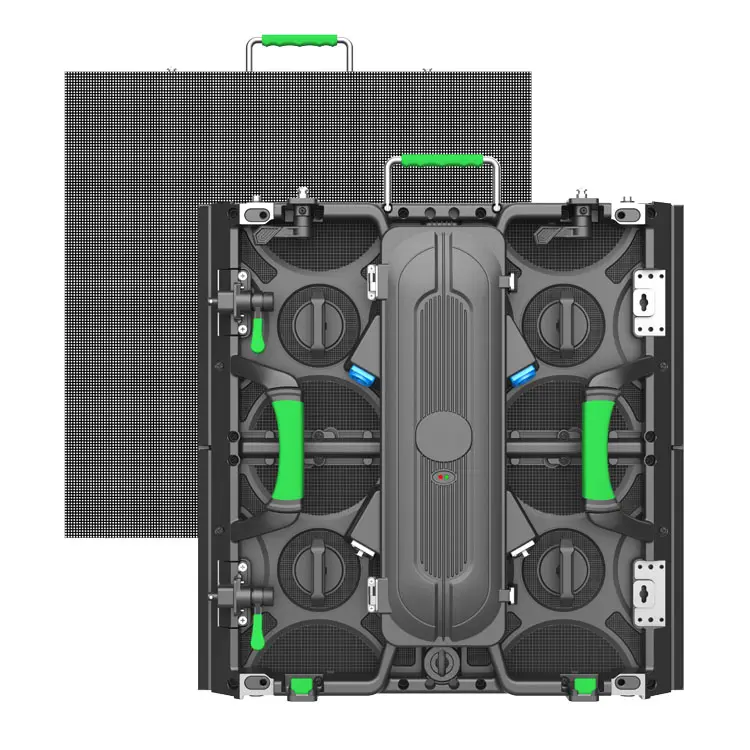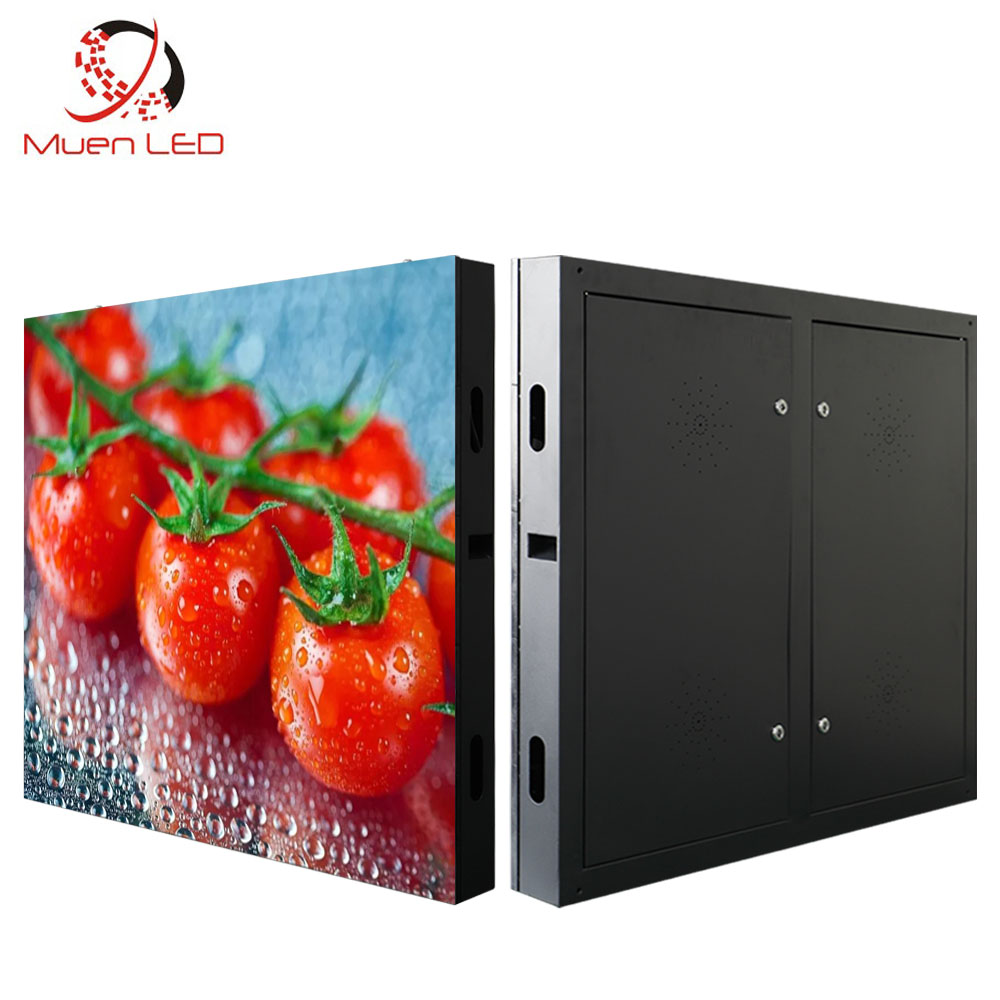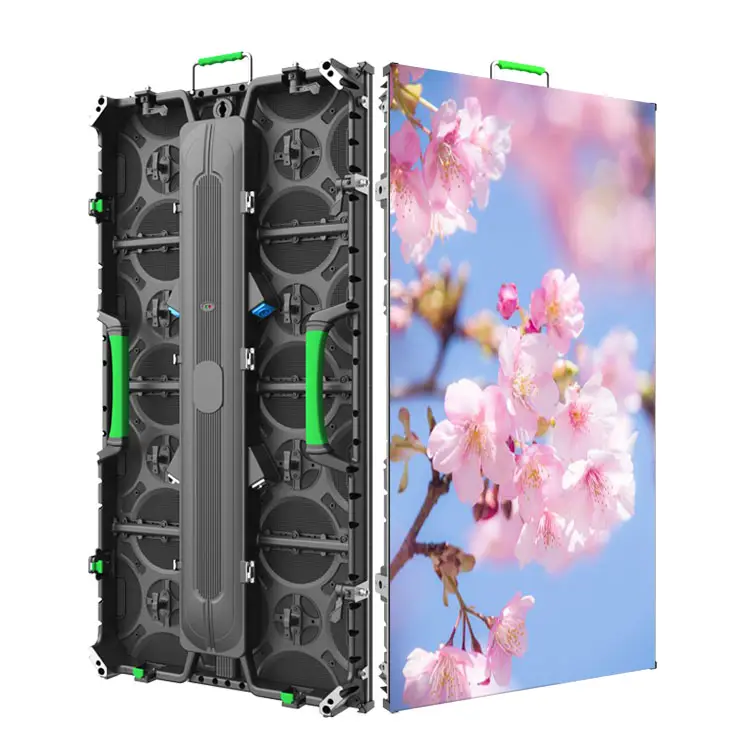
What are the types, advantages, and main differences of LED display cabinets?
An LED screen cabinet is a key component in LED display systems, designed to hold and protect the LED modules while ensuring the display functions efficiently.
1.What is an LED Screen Cabinet?
An LED screen cabinet serves as a protective housing for LED modules. It provides structural support, keeps the components safe from damage, and ensures proper power and cooling to maintain optimal performance, whether indoors or outdoors.
1. Key Functions of an LED Screen Cabinet

010
1.Protection
The cabinet shields your LED modules from dust, moisture, and physical damage, ensuring durability and reliability.
2.Structural Support
It keeps the modules securely in place, ensuring the display remains stable and aligned.
3.Cooling
Equipped with ventilation or cooling systems, the cabinet prevents overheating, helping to extend the lifespan of your display.
4.Power & Cable Management
The cabinet organizes power supplies and cables, reducing clutter and ensuring smooth operation.
5.Easy Maintenance
Designed for easy access, the cabinet allows for quick repairs, module replacements, and ongoing maintenance.
6.Enhanced Display Quality
By keeping the modules aligned, the cabinet helps maintain consistent brightness and image quality across the display.
2.Benefits of LED Screen Cabinet

7f555f1f79bab2a7b6ae7cbc76c569f3
LED screen cabinets offer several key advantages that enhance the performance and longevity of your LED displays.
1.Enhanced Display Quality
LED screen cabinets ensure that the modules are securely aligned, which helps maintain consistent brightness and image clarity. This alignment improves the overall visual quality, ensuring a seamless viewing experience.
2. Improved Screen Protection
The cabinet acts as a protective shield, guarding the LED modules from external factors like dust, moisture, and physical damage. This added protection helps extend the lifespan of the display and reduces the risk of malfunction.
3. Easy Installation and Maintenance
LED screen cabinets are designed for quick and easy installation. Their modular design allows for efficient setup, and maintenance is simplified with easy access to individual modules. This reduces downtime and makes repairs or upgrades hassle-free.
4. Increased Reliability of the Overall Display System
By providing a secure and stable housing for the LED modules, the cabinet ensures that the entire display system runs smoothly. This reliability is crucial, especially for high-traffic outdoor displays or large-scale indoor installations where uptime is essential.
3. Types of LED Screen Cabinets

There are several types of LED screen cabinets, each designed for specific applications and environments.
1. Fixed LED Screen Cabinets
Fixed LED screen cabinets are designed for permanent installations. These cabinets are typically used in locations where the display will remain in one place, such as digital billboards, video walls, or large indoor displays. They provide a stable, durable solution for long-term use.
2. Mobile LED Screen Cabinets
Mobile LED screen cabinets are built for flexibility and portability. These cabinets are often used for events, exhibitions, and temporary displays where the screen needs to be moved frequently. They are mounted on wheels or frames for easy transportation and setup.
3. Outdoor LED Screen Cabinets
Outdoor LED screen cabinets are specifically designed to withstand harsh weather conditions. Built with durable, weatherproof materials, these cabinets protect the LED modules from rain, dust, extreme temperatures, and UV rays, making them ideal for outdoor advertising, sports arenas, and public spaces.
4. Indoor LED Screen Cabinets
Indoor LED screen cabinets are designed for indoor environments. These cabinets are typically lighter and more compact than outdoor cabinets, providing a sleek and aesthetically pleasing solution for shopping malls, airports, and other indoor spaces. They prioritize design and ease of integration into indoor settings.
4. What is the Difference Between LED Cabinets and LED Modules?
While both LED cabinets and LED modules are essential components in LED display systems, they serve different purposes and have distinct characteristics.
1.Definition Differences Between LED Cabinets and LED Modules
- LED Cabinet: An LED cabinet is a frame that houses and protects multiple LED modules, providing structural support and a system for electrical connections.
- LED Module: An LED module is a small unit that contains individual LEDs arranged in a grid. It is the basic building block of an LED display, responsible for generating the images or videos shown on the screen.
2. Structural Differences
- LED Cabinet: The LED cabinet is a larger, more rigid structure made of metal or durable materials, designed to house several LED modules. It provides protection, ventilation, and mounting points for the modules, as well as the power and cooling systems.
- LED Module: An LED module is typically a smaller, lighter component that consists of several LEDs placed on a circuit board.
3. Functional Differences
- LED Cabinet: The main function of an LED cabinet is to organize and protect the modules, ensuring their proper alignment and cooling. It also houses the electrical components needed to power the modules and manage wiring.
- LED Module: The LED module’s primary function is to display images or videos by lighting up its individual LEDs. Each module is responsible for a portion of the screen’s display and contributes to the overall resolution and brightness.
4. Suitable Applications for Each
- LED Cabinet: LED cabinets are ideal for large-scale, permanent installations where stability and protection are crucial.
- LED Module: LED modules are best suited for customizable displays where flexibility is important.
Choosing the right LED screen cabinet is crucial for the performance and longevity of your display. Here’s how to make the best choice.
6. How to Choose the Right LED Screen Cabinet for Your Needs

- Environment: Choose an outdoor cabinet for harsh conditions and an indoor cabinet for a sleek, compact design. For events, go for a mobile cabinet for easy transport.
- Size and Configuration: Ensure the cabinet supports the size and resolution of your display. Modular cabinets allow for flexible configurations.
- Cooling: Opt for cabinets with effective cooling systems to prevent overheating.
- Maintenance: Choose a cabinet that allows easy access to modules for quick repairs.
- Durability: Look for high-quality materials. MuenLED cabinets offer long-lasting durability.